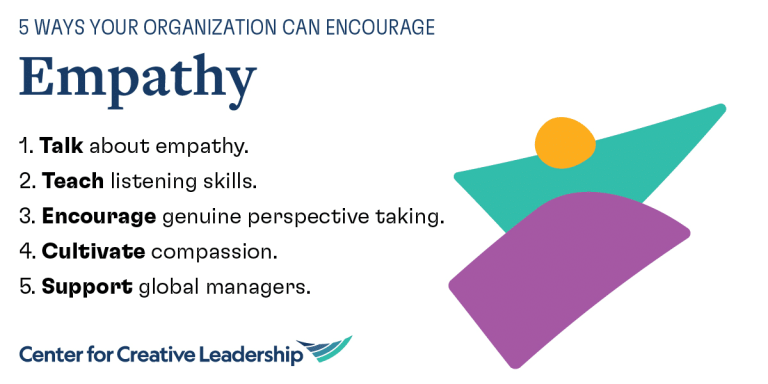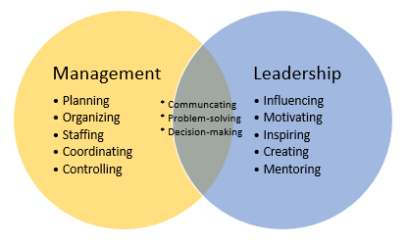Employee Retention Strategies: Building a Loyal Workforce for Long-Term Success
In today’s competitive landscape, retaining top talent is crucial for the long-term success of any organization. With the escalating competition for skilled employees, businesses have come to realize that employee retention goes beyond merely attracting great hires; it involves keeping them engaged, motivated, and committed. High turnover can disrupt teams, hinder progress, and drain valuable resources. Hence, adopting the right approach to retention is essential to ensure that your most valuable players stay on board, contributing to your company’s ongoing success.
Why Employee Retention Matters
Employee retention plays a vital role in organizational success, directly impacting cost efficiency, productivity, and workplace culture. High turnover rates result in significant recruitment and training costs, while long-term employees enhance productivity through their familiarity with company processes. Retained talent fosters a positive workplace culture, contributing to higher employee engagement and improved morale, which ultimately leads to enhanced customer satisfaction.
Experienced employees possess invaluable knowledge and skills that are critical for effective decision-making and innovation. A robust retention strategy also bolsters the employer brand, making it easier to attract top talent through external hiring. Ultimately, investing in employee retention cultivates a stable, resilient workforce that drives long-term business success.
Best Strategies for Employee Retention
Remuneration-Based Retention Strategies
- Offer Competitive Salaries and Benefits
Ensure your compensation packages are in line with industry standards. Competitive pay attracts top talent and reduces turnover. Comprehensive benefits—such as health insurance, retirement plans, paid leave, and wellness programs—are equally critical. Regularly reviewing and adjusting salary structures ensures that employees feel valued and fairly compensated. - Provide Performance-Based Rewards
Reward employees based on their contributions through performance bonuses, promotions, or pay raises tied to specific achievements. This approach motivates employees to excel when performance metrics are transparent, fair, and measurable. Regular feedback sessions with supervisors can help clarify expectations and track progress toward performance goals. - Implement Stock Options and Profit Sharing
Offering stock options or profit-sharing programs gives employees a stake in the company’s success, fostering long-term commitment. When employees have a personal financial interest in the business’s performance, they are encouraged to remain with the company and contribute to its success. - Introduce Personalised Compensation Packages
Tailoring compensation packages to individual preferences allows you to meet the diverse needs of your workforce. For example, younger employees may prioritize salary, while seasoned employees may value healthcare benefits more. Offering choices within a benefits package ensures that employees feel their personal circumstances are considered. - Recognition through Monetary Awards
Recognize exceptional work with monetary awards such as spot bonuses or employee-of-the-month incentives. Employees who feel appreciated are more likely to stay motivated and committed to the company. Monetary recognition should be immediate and linked to specific achievements to reinforce the connection between effort and reward.
Skills Development Employee Retention Strategies
- Build a Tailored Skills Development Program
Developing employee training programs specific to your workforce ensures that employees and the company grow together. Providing opportunities for employees to upskill demonstrates the company’s investment in their future. Training programs can include leadership, technical skills development, or interpersonal communication workshops. - Offer Personalised Learning Paths
Customizing learning paths based on individual career goals shows a commitment to personal growth. This approach allows employees to align their continuous professional development with their aspirations, creating a sense of purpose and direction. - Create Clear Career Advancement Paths
Providing clear career advancement pathways gives employees a vision for their future within the company. Transparent succession planning allows employees to understand the steps required for promotion, reassuring them that there is room for growth within the organization. - Offer Mentorship and Coaching
Access to mentors and coaches provides employees guidance beyond traditional training. Formal mentorship programs enable employees to learn through hands-on experience and receive real-time guidance from seasoned professionals, fostering a culture of collaboration and continuous growth. - Provide Recognition and Incentives for Skill Growth
Recognizing employees for their dedication to skill development is vital for fostering a culture of lifelong learning. Offering promotions or incentives for skill growth motivates employees to pursue further education or training, enhancing their career trajectory. - Use Technology to Support Learning and Development
Technological advancements have made learning more accessible. Implementing learning management systems (LMS) or online course platforms allows employees to upskill at their own pace, signaling that the company values employee development.
Engagement and Purpose-Based Retention Strategies
- Align Work with Employee Values and Interests
Ensuring that employees find meaning in their work by aligning tasks with their personal values leads to higher engagement. When employees feel their work contributes to something greater, they are more invested in the company’s success. - Promote Employee Autonomy
Providing employees autonomy over their work fosters a sense of responsibility and ownership. Trusting employees to make decisions enhances job satisfaction and encourages them to stay with the company. - Provide Opportunities for Impactful Contributions
Offering opportunities for employees to contribute to meaningful projects, whether within the company or in the community, helps them feel a sense of purpose. Engaging in corporate social responsibility (CSR) initiatives can deepen their emotional investment in their work. - Encourage Employee Involvement in Decision-Making
Involving employees in crucial decision-making processes enhances their sense of ownership within the company. This engagement fosters a stronger emotional connection to the company’s goals and creates a culture of trust and mutual respect.
Work Environment and Culture-Based Retention Strategies
- Foster a Positive and Inclusive Workplace Culture
A positive workplace culture, where employees feel respected and valued, is essential for organizational success. Promoting diversity and inclusion ensures that all employees feel recognized and appreciated, enhancing commitment. - Encourage Open Communication and Feedback
Establishing open communication channels is vital for a healthy work environment. Encouraging regular feedback allows leadership to address issues before they escalate, building trust between management and employees. - Improve Onboarding Processes
A strong onboarding process sets the tone for new employees’ experiences. Effective onboarding goes beyond basic orientation; it involves thorough training and integration into the company culture. Regular check-ins during the first few months reinforce employee training and ensure a smooth transition. - Recognise and Celebrate Achievements
Regularly acknowledging employee efforts enhances job satisfaction. Celebrations should recognize both individual and team accomplishments, fostering a sense of pride and motivating employees to continue striving for success. - Promote Team Collaboration and Social Activities
A collaborative work environment encourages teamwork and builds strong interpersonal relationships. Social activities, such as team-building exercises, foster camaraderie among employees and increase loyalty. - Support a Culture of Flexibility and Trust
Offering flexible work arrangements—such as remote work options or adjustable hours—promotes a better work-life balance. Trusting employees to manage their responsibilities without micromanagement empowers them to take ownership of their work. - Recognise When It’s Time to Let Go
Although it may seem counterintuitive, sometimes letting an employee go is necessary for the company’s overall health. Holding on to disengaged or underperforming employees can negatively impact team morale. Transparent and professional management of departures maintains a positive workplace culture.
Work-Life Balance Retention Strategies
- Implement Flexible Working Arrangements
Flexible arrangements, such as remote work or hybrid models, help employees manage their personal and professional lives effectively. Well-structured flexible work policies can drastically reduce stress and enhance long-term retention. - Encourage Time Off and Wellness Programs
Promoting regular time off and wellness programs supports mental and physical health. Offering paid time off and mental health days demonstrates the company’s commitment to employee well-being. - Support Family and Personal Commitments
Implementing policies that assist employees with family responsibilities—such as parental leave or child care assistance—shows a strong commitment to work-life balance. Resources like flexible scheduling or family leave encourage long-term retention. - Promote Employee Assistance Programs (EAPs)
EAPs provide confidential counseling and support for employees facing personal challenges, demonstrating that the company cares about holistic well-being. - Provide Wellness Incentives
Offering wellness incentives, such as gym memberships or health challenges, encourages employees to adopt healthier lifestyles and promotes overall satisfaction.
Monitoring and Measuring Employee Retention
To effectively gauge the success of retention strategies, organizations should track several key metrics:
- Employee Turnover Rate: Calculating the percentage of employees leaving during a specific period can reveal patterns and highlight areas needing improvement.
- Employee Retention Rate: This measures the percentage of employees remaining with the company over a set period, serving as a direct indicator of workforce stability.
- Employee Engagement Surveys: Regular surveys provide insights into employee satisfaction and areas for concern, allowing businesses to address problems proactively.
- Exit Interviews: Conducting detailed exit interviews with departing employees can uncover trends in turnover and inform the development of more targeted retention strategies.
- Time to Productivity: Measuring how long new hires take to reach full productivity can identify issues with onboarding or role clarity.
- Absenteeism and Presenteeism Rates: High absenteeism or presenteeism levels may indicate underlying retention issues, prompting further investigation.
- Internal Mobility Metrics: Tracking employee promotions or lateral moves can indicate the effectiveness of career development programs.
Boost Employee Retention and Loyalty with Proven Strategies
Employee retention is not a one-size-fits-all solution; it requires understanding and addressing the diverse needs of your workforce. By investing in employee growth, promoting flexibility, and recognizing contributions, businesses can reduce turnover, enhance morale, and build long-term loyalty.
When employees feel supported, respected, and aligned with their organization’s values, they are more likely to remain engaged and contribute to the company’s ongoing success. By
adopting the above strategies, organizations can foster a loyal workforce capable of driving innovation, productivity, and growth in an increasingly competitive marketplace.


